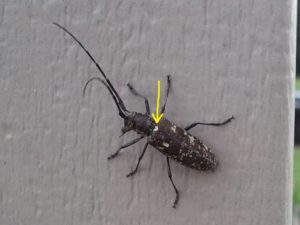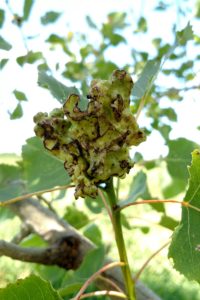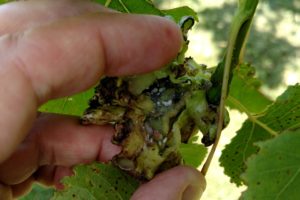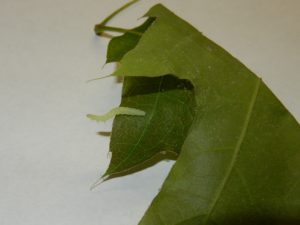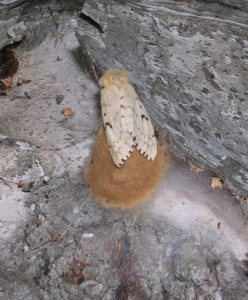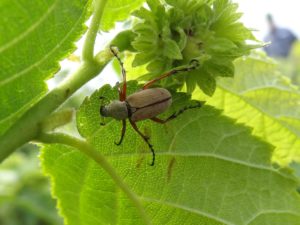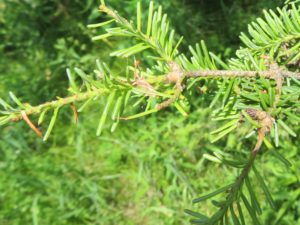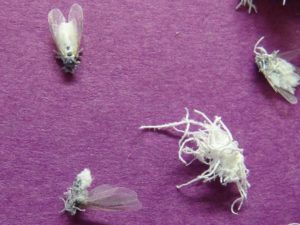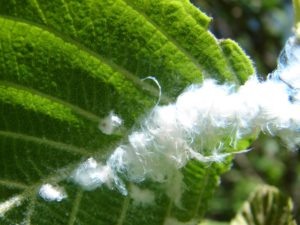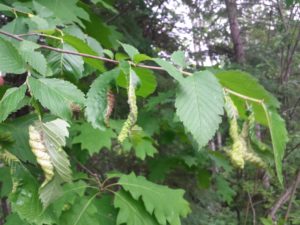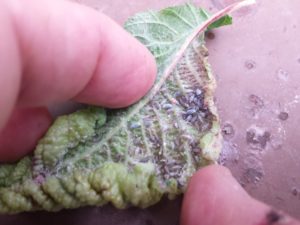Japanese beetles are abundant and causing extensive damage to many species of plants in 2017. Although many landowners in southern Wisconsin have experienced severe damage in the past, this is the first time many in central and northern Wisconsin have experienced an outbreak. The beetles are so common this year in part because populations have recovered after the droughts a few years ago. Many reports are also coming in from newly-invaded areas in northern Wisconsin. Linda Williams noted heavy populations and significant defoliation to birch in the Minocqua/Woodruff area, and growing populations in the Rhinelander area.
Japanese beetles are pests both as larvae and adults. Larvae feed on roots of turf and ornamentals causing pale, dead patches that eventually combine. Adult beetles feed on foliage and flowers of many plant species including trees, fruits, vegetables and weeds. Linden, birch, crabapple, mountain ash, Norway maple and Japanese maple are favorite host trees. Adults eat between the veins causing leaves to look lace-like. Trees severely damaged turn brown and become partially defoliated.

Adult Japanese beetles feed on a wide-variety of plants causing leaves to have a lace-like appearance.
Many treatment options are available, but in outbreak years landowners may be resigned to limiting damage to their favorite plants.
Control options include:
- Remove beetles by hand and squish or put in soapy water.
- Spray beetles with an insecticide labelled for Japanese beetle control.
- Do not irrigate during peak adult flight to make the soil less attractive for egg laying.
- Apply carbaryl (Sevin), clothiandin (Arena) or trichlorfon to the soil in early to mid-August to kill larvae.
- Apply imidacloprid, chorantraniliprole, clothianidin and thiamethoxam to soil from May to early July to kill larvae.
Some common control options are not recommended. Traps are typically ineffective as they attract more beetles to the area. Biological control of grubs using milky spore disease or others biologicals is often inconsistent.
For more information see UW-Extension’s fact sheet.
Written by Mike Hillstrom, forest health specialist, Fitchburg (Michael.Hillstrom@Wisconsin.gov), 608-513-7690.

